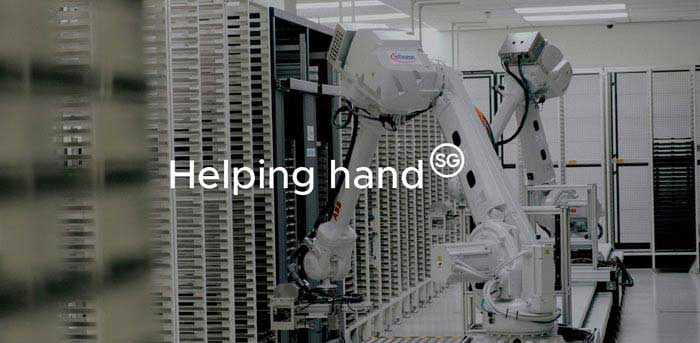Executive director for logistics for
Economic Board of Development for Singapore
commented that focus on manufacturing innovation, which is Singapore's core strength will allow the country to take advantage of trade growth around Asia. There is a marked slowdown in Asian trade, but the growth will resume with increasing young adult population and booming middle class. Asia will see booming growth for coming future years, far better than other parts of the globe. Singapore's EDB, the main economic agency is in charge of almost 40% GDP for the country.
The Singapore Economic Development Board (EDB), a government agency under the Ministry of Trade and Industry, is responsible for strategies that enhance Singapore's position as a global centre for business, innovation, and talent.
"EDB is selective in engaging and promoting investments which meet the resource profile and the aspirations of Singaporeans. We are committed to ensuring that activities in Singapore are fit for the future and sustainable in the medium to long term.
We are confident that these efforts will accelerate our shift from being a value adding economy to being a value creating one, to bring about sustainable economic opportunities for all."
Dr Beh Swan Gin, Chairman, Singapore Economic Development Board
Looking back in time, South East Asia trade harmonization in 2015 will see 10 member nations doubling trade volume, with 25% originating from inter Asia trade. ASEAN countries comprising of Brunei, Malaysia, Cambodia, Laos, Malaysia, Singapore, Myanmar, Philippines, Vietnam and Thailand has 600 million strong population. ASEAN relationship will see higher commitment for freer cargo flow and finance movement. There will be convergence and standardization of trade practices as well as transportation infrastructure. Singapore Port suffered lower port volume movement due to global trade slowdown. Container traffic at five main terminals operated by one and only PSA Singapore rose only 1.4% year on year during the 1st half for the year, down from 5.2% growth in 2011 and 2012. Jurong Port is another port facility handling containers. Manufacturing output in the island city state fell 5.9% year on year in the month of June. If biomedical manufacturing products are excluded, the total output fell just 0.5%. Biomedical production is more cyclical in nature hence the demand fall is more severe compared to other stable industry.
Rolls-Royce Singapore is the sole company based in Asia to manufacture Boeing's engine for its latest 787 Dreamliner model as well as Airbus A300 jumbo jets. This solidified Singapore's status as a high value chain manufacturer. 40 years ago Singapore were known to American consumers as a low cost manufacturing hub. Engineering products are another key output where almost 70% of jack up oil rigs originating from Singapore. Singapore is also a top manufacturer for semiconductor components. If we analyze the history of Singapore manufacturing scene, over the last 40 years low value manufacturing has been replaced with high value production output.
Comprehensive infrastructure has enabled Singapore's factories to be more competitive against its global peers. Changi Airport was ranked 12th in terms of cargo handling volume in 2014 and its port ranked 2nd in the whole globe right behind Shanghai. Singapore topped the World Bank ranking for logistics and trade flow in 2012. The logistics industry in Singapore employs around 200,000 skilled labor and contributes 8% to the nation's GDP. Manufacturing on the other hand contributes 25% for Singapore's GDP. Singapore port is not spared from competition from all fronts. In South East Asia alone, Colombo Port in Sri Lanka as well as Port Klang are vying a piece of the trade pie. Singapore has managed to come out tops due to its dominant container capacity and reliable and efficient service coupled with stable political scene.
85% of roughly 30million TEUs that passes through Singapore annually are transshipped, with the remainder 15% being direct exports and imports. A planned new port located in Tuas will be expected to expand Singapore's capacity to 65 million TEU by 2027. Tuas will serve as the new western transshipment hub. Its Pasir Panjang Port Terminal will undergo expansion in order to increase capacity by fifteen million TEU. Total amount spent will be around $3.5 billion. Singapore has the potential to provide specialized service that serve the healthcare, aerospace and oil & gas industry. About 20 top global 2rd party logistics enterprises have solid base in Singapore. This will help Singapore advance the specialized service sector. DHL, UPS as well as World Courier have started launching healthcare logistics services, using Singapore as a main hub. DHL and Panalpina had used Singapore as an oil & gas hub for logistics.
Singapore's strong economic development focus and world class education system can assist companies in refining their operational procedures to excellent levels. There is unlimited growth potential for supply chain solutions providers. Asia has yet to come to a standardized operating landscape hence shippers will have difficulty attaining efficiency for the supply chain management. There is much to be learned from European and US counterparts. Manufacturers are constantly on the lookout for efficient supply chain management solutions across all geographical regions. Trade within Asia and with countries outside of Asia will continue to grow and companies should be well positioned to capture the growth.

